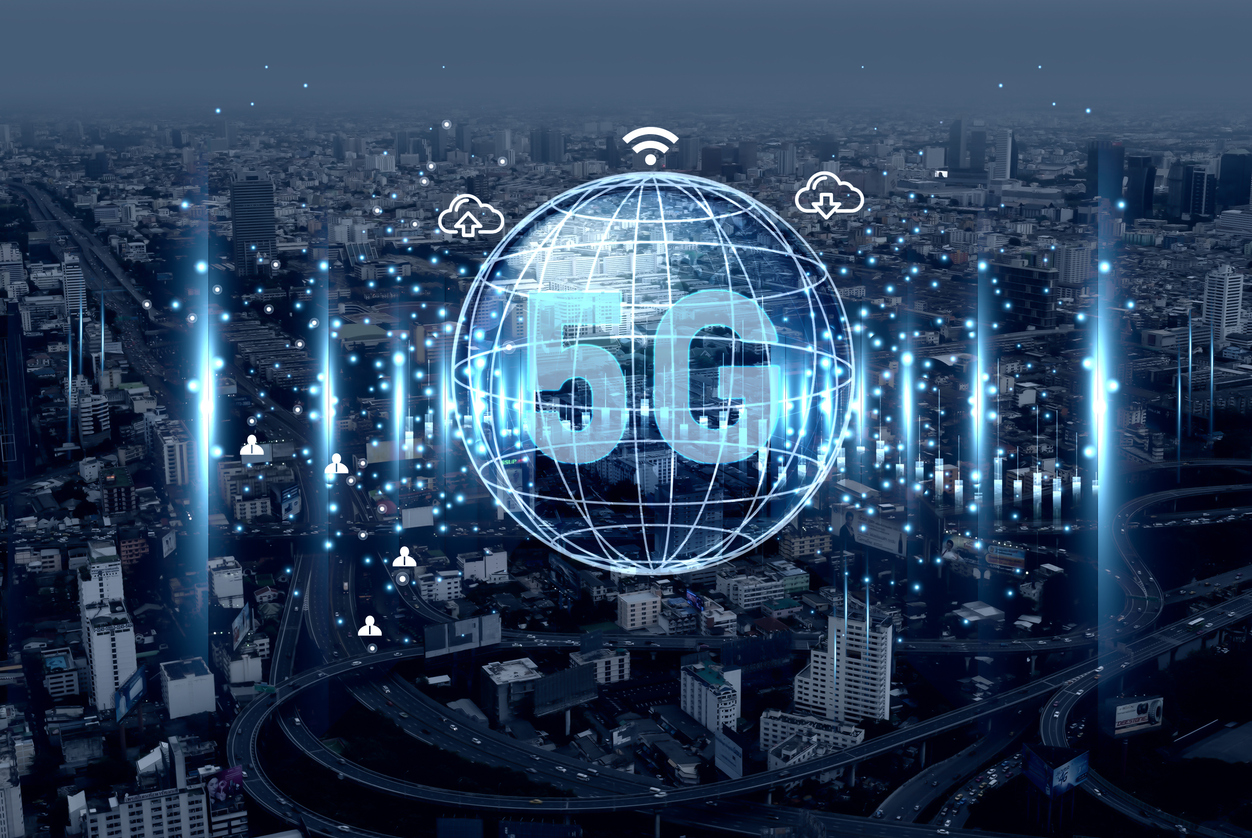
5G, the fifth generation of wireless technology, is revolutionizing the way we connect to the internet, offering faster speeds, lower latency, and the potential to transform industries. However, with its rapid rollout, there are both advantages and concerns associated with this new technology. In this article, we’ll dive into what 5G is, its key benefits, and some potential drawbacks, helping you better understand the impact of 5G on your daily life and the wider world.
What is 5G?
5G is the latest iteration of mobile networks, succeeding 4G LTE. It promises significant improvements in speed, latency (the time it takes for data to travel from one point to another), and network capacity. While 4G offered impressive improvements over 3G, such as high-definition video streaming and faster downloads, 5G takes things to the next level by enabling new applications that weren’t previously possible due to technical limitations.
Key advancements of 5G:
- Faster speeds: 5G networks can theoretically deliver speeds up to 100 times faster than 4G.
- Lower latency: Latency can be reduced to as low as 1 millisecond, compared to 50 milliseconds or more on 4G networks.
- Greater capacity: 5G can support far more connected devices than previous generations, making it ideal for smart cities, the Internet of Things (IoT), and autonomous vehicles.
Benefits of 5G
The advantages of 5G are transformative, particularly in the areas of speed, connectivity, and technological innovation.
1. Ultra-Fast Speeds
One of the most talked-about benefits of 5G is its speed. With the ability to deliver download speeds of up to 10 Gbps, 5G enables faster browsing, streaming, and downloading. For users, this means seamless video streaming in ultra-high definition (4K and 8K), quicker downloads for large files, and smoother online gaming experiences.
How it impacts daily life:
- Streaming 4K videos or large software downloads will take seconds instead of minutes.
- Video calls and online gaming will benefit from reduced buffering and lag, even in areas with high network demand.
Pro tip:
- 5G speed allows for advanced applications like augmented reality (AR) and virtual reality (VR) to function smoothly on mobile devices, creating new entertainment and educational opportunities.
2. Lower Latency for Real-Time Communication
Latency refers to the time it takes for data to travel between two points. In gaming, for example, low latency is essential for real-time responsiveness, ensuring that actions happen immediately without delay. 5G’s ultra-low latency (down to 1 millisecond) enables instant communication between devices, allowing for faster data transfers and real-time interactions.
Benefits of low latency:
- Autonomous vehicles can make split-second decisions in traffic, leading to safer roads.
- Remote surgeries and telemedicine can become more reliable, allowing surgeons to operate with precision from across the globe.
- Enhanced experiences in gaming and virtual meetings, where lag can ruin the user experience.
Pro tip:
- Low latency is crucial for applications requiring real-time communication, such as drone control, remote robotic operations, and the expansion of IoT devices in industries like healthcare and manufacturing.
3. Improved Network Capacity
5G offers significantly increased network capacity, meaning it can support far more devices than 4G without compromising performance. This is a crucial benefit in today’s world, where an increasing number of devices are connected to the internet, from smart home gadgets to industrial sensors.
How it impacts industries and homes:
- Smart cities: 5G can enable the widespread use of IoT in smart cities, helping optimize traffic flow, energy use, and public safety.
- Smart homes: Households can seamlessly connect more devices, such as security systems, smart appliances, and entertainment systems, without worrying about network congestion.
- Business environments: Large-scale businesses, including factories and warehouses, can rely on 5G to connect multiple devices and systems, improving operational efficiency.
Pro tip:
- As more IoT devices and smart infrastructure are developed, 5G’s capacity to handle multiple connections without slowing down ensures the growth of interconnected, smart ecosystems.
4. Enhanced Experiences for Mobile Users
With 5G, mobile users can expect faster, smoother, and more responsive experiences across their devices. Whether you’re streaming, gaming, or browsing, 5G promises a seamless experience with fewer disruptions.
Examples:
- Streaming: You can stream high-definition content, including 4K or even 8K videos, without interruptions or buffering.
- Gaming: Online mobile gaming, especially for multiplayer games, will become smoother and more immersive.
- Remote work: 5G will improve the quality of video calls and collaboration tools, making remote work more efficient and enjoyable.
Pro tip:
- If you live in a busy city where network congestion can be a problem, 5G’s improved bandwidth will help prevent slowdowns during peak usage times.
Drawbacks of 5G
While 5G brings many benefits, there are also some concerns and challenges that come with this next-generation technology.
1. Limited Coverage and Availability
One of the primary drawbacks of 5G is that it’s still in its early stages of rollout, with limited coverage, particularly in rural areas. Unlike 4G, which has broad coverage, 5G’s higher frequency bands (millimeter waves) don’t travel as far or penetrate obstacles like buildings and trees as effectively, limiting its reach.
Impact on users:
- Urban areas are likely to benefit from 5G sooner than rural areas, leading to disparities in access.
- Users may experience inconsistent 5G coverage, switching between 5G, 4G, or even 3G depending on location.
Pro tip:
- As 5G networks expand, carriers are working to build out infrastructure, but it may take several years before 5G has the same broad coverage as 4G.
2. Cost of Implementation and Devices
Building 5G infrastructure is expensive, and these costs may be passed down to consumers in the form of higher data plan prices or increased costs for 5G-compatible devices. Additionally, many users may need to upgrade their current smartphones or devices to take advantage of 5G’s benefits.
Cost concerns:
- Initial 5G devices and data plans may be priced higher than their 4G counterparts, making the transition costly for some users.
- Infrastructure costs mean that full nationwide coverage will take time, and some areas may not prioritize 5G implementation right away.
Pro tip:
- If you’re considering upgrading to 5G, wait for prices to stabilize as more devices become available and networks expand. This will likely lead to more affordable options over time.
3. Potential Health and Environmental Concerns
As with any new technology, there have been concerns about the health and environmental impacts of 5G. While extensive research has shown no conclusive evidence of harmful effects from the radio frequencies used by 5G, some worry about long-term exposure and the increased density of 5G cell towers.
Concerns to consider:
- The increase in cell tower density required for 5G networks has raised questions about potential environmental impacts, as more infrastructure is needed to support the technology.
- Although 5G uses non-ionizing radiation, some people remain cautious about its potential effects on health.
Pro tip:
- Follow research from trusted scientific organizations to stay informed about the latest findings regarding 5G’s health and environmental impacts.
5G is poised to transform the way we connect, offering faster speeds, reduced latency, and greater network capacity. While its benefits are clear, including enhanced mobile experiences, increased IoT applications, and new possibilities in industries such as healthcare and transportation, there are also challenges to consider. Limited coverage, higher costs, and concerns about health and the environment are all important factors in the ongoing rollout of 5G technology. As 5G continues to evolve, its impact will undoubtedly shape the future of connectivity and innovation.







